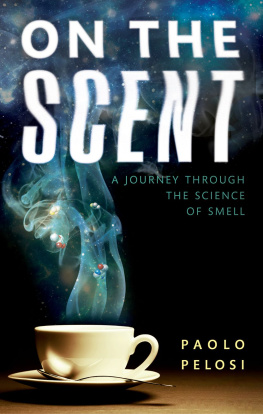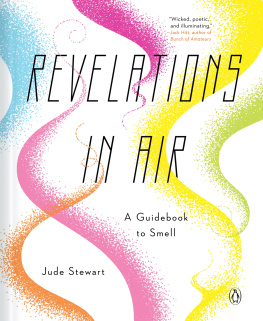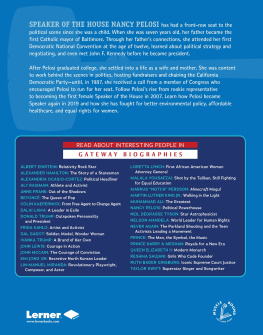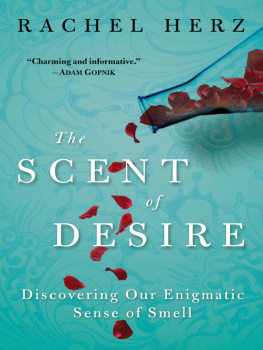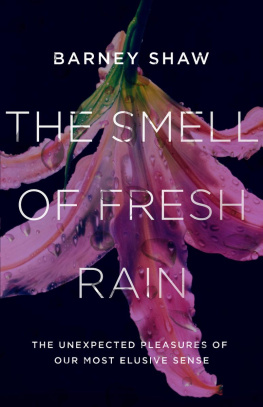Pelosi - On the scent: a journey through the science of smell
Here you can read online Pelosi - On the scent: a journey through the science of smell full text of the book (entire story) in english for free. Download pdf and epub, get meaning, cover and reviews about this ebook. City: Oxford, year: 2016, publisher: Oxford University Press, genre: Romance novel. Description of the work, (preface) as well as reviews are available. Best literature library LitArk.com created for fans of good reading and offers a wide selection of genres:
Romance novel
Science fiction
Adventure
Detective
Science
History
Home and family
Prose
Art
Politics
Computer
Non-fiction
Religion
Business
Children
Humor
Choose a favorite category and find really read worthwhile books. Enjoy immersion in the world of imagination, feel the emotions of the characters or learn something new for yourself, make an fascinating discovery.
- Book:On the scent: a journey through the science of smell
- Author:
- Publisher:Oxford University Press
- Genre:
- Year:2016
- City:Oxford
- Rating:3 / 5
- Favourites:Add to favourites
- Your mark:
- 60
- 1
- 2
- 3
- 4
- 5
On the scent: a journey through the science of smell: summary, description and annotation
We offer to read an annotation, description, summary or preface (depends on what the author of the book "On the scent: a journey through the science of smell" wrote himself). If you haven't found the necessary information about the book — write in the comments, we will try to find it.
Pelosi: author's other books
Who wrote On the scent: a journey through the science of smell? Find out the surname, the name of the author of the book and a list of all author's works by series.
On the scent: a journey through the science of smell — read online for free the complete book (whole text) full work
Below is the text of the book, divided by pages. System saving the place of the last page read, allows you to conveniently read the book "On the scent: a journey through the science of smell" online for free, without having to search again every time where you left off. Put a bookmark, and you can go to the page where you finished reading at any time.
Font size:
Interval:
Bookmark:


Great Clarendon Street, Oxford, ox2 6dp , United Kingdom
Oxford University Press is a department of the University of Oxford. It furthers the Universitys objective of excellence in research, scholarship, and education by publishing worldwide. Oxford is a registered trade mark of Oxford University Press in the UK and in certain other countries
Paolo Pelosi 2016
The moral rights of the author have been asserted
First Edition published in 2016
Impression: 1
All rights reserved. No part of this publication may be reproduced, stored in a retrieval system, or transmitted, in any form or by any means, without the prior permission in writing of Oxford University Press, or as expressly permitted by law, by licence or under terms agreed with the appropriate reprographics rights organization. Enquiries concerning reproduction outside the scope of the above should be sent to the Rights Department, Oxford University Press, at the address above
You must not circulate this work in any other form and you must impose this same condition on any acquirer
Published in the United States of America by Oxford University Press 198 Madison Avenue, New York, NY 10016, United States of America
British Library Cataloguing in Publication Data
Data available
Library of Congress Control Number: 2015949829
ISBN 9780198719052
ebook ISBN 9780191029141
Printed in Great Britain by Clays Ltd, St Ives plc
Links to third party websites are provided by Oxford in good faith and for information only. Oxford disclaims any responsibility for the materials contained in any third party website referenced in this work.
Odorants constitute a very large and surprisingly diverse family of chemicals, each with their unique identity, but all interesting and captivating, as is the assortment of smells around us which add flavour to our lives.
In this book we focus on a very large number of molecules, all diverse and unrelated by structure or chemical properties, but sharing the characteristic of being volatile and therefore capable of being carried by a breath of air to our nose, where they trigger our perception of a variety of smells.
For those to whom chemistry is not the most appealing subject I suggest approaching its study through olfaction. We have an excellent analytical laboratory in our nose. What it returns when challenged by molecules is not irksome formulas and charts, but sensations and emotions, sweet as the scents of flowers, attractive as the wafting smell of baking bread, stimulating as the pungent odour of spices. Images and memories are linked to such analytical reports, making them vivid. Just try to visualize the molecules responsible for such exciting experiences and you can immediately perceive the beauty of chemistry.
As a chemist I have always been interested in smell and therefore when as a young graduate I joined the Department of Agriculture at the University of Pisa, Italy and my mentor Carlo Galoppini suggested studying the flavour of foods, I jumped at the opportunity. Two months later I found myself at the other end of the globe in the lab of John Amoore at one of the four laboratories of the US Department of Agriculture in Berkeley, California.
Carlo Galoppini provided the initial stimulus and was able to foresee back in 1974 the value of studying olfaction, and its potential applications to food quality. During his entire career he supported and encouraged my research and after his retirement we maintained a firm friendship. Over the past few years he encouraged me in the writing of this book, which unfortunately he was not able to see published, having died in May 2014.
John Amoore introduced me to the study of the relationships between smell and molecular structure, long before biochemistry entered the field. His enthusiasm as a pioneer in the field of olfaction gave me the support and passion to venture into what was at that time a largely unexplored field. He was the first to suggest that smell is related to chemical shape and structure, a theory largely confirmed by experimental data, which were the basis for biochemical studies. He passed away prematurely in 1998, but not before having witnessed tremendous changes and innovation in the field which he had greatly contributed in generating.
During my lectures to students of Food Science, and talks delivered in different contexts to general audiences, I have always experienced a lively and compelling interest in the many different aspects of smell and how we perceive it. Questions were pouring out from a wide spectrum of interests, evidencing the curiosity and yearning for knowledge in a field where we still have difficulties in putting our everyday experiences into a scientific framework.
Smells often go unnoticed and are vastly overlooked. Yet they can secretly affect our mood, influence our choices, and make our life more enjoyable. We are surrounded by molecules continuously bombarding our noses, even if we are not deliberately sniffing the air. Smells can be aggressive and repel us, often from dangerous situations, or they can be irresistibly attractive, in stealthy ways. Smells inspire emotions and bring back with vivid immediacy long forgotten memories.
Smells are important to humans, but they are even more critical for most animals, from insects to mammals. Nevertheless the study of olfaction has been neglected until very recently. When I started my journey through smells and proteins, towards the end of the 1970s, the field was a new territory to be conquered, with very few scientists involved, and these were mainly working on psychophysical or electrophysiological aspects. Today, olfaction is one of the most active areas of neuroscience.
The study of olfaction also unexpectedly revealed another hidden treasure. The olfactory epithelium, where the endings of olfactory neurons reach the external environmentin practice an extension of the brain looking out to the worldalso houses pluripotent and very primitive stem cells used in recent times to clone mice. Already by the early 1980s Pasquale Graziadei and Ariella Monti-Graziadei, an Italian scientist couple working in Florida, had amply illustrated the plasticity of the olfactory system and the unique capacity of the regeneration of olfactory neurons. For these reasons this system has recently become the object of wide interest among scientists working in the field of neuronal differentiation and regeneration, as well as those studying stem cells and their uses in treating degenerative diseases.
Despite all these interesting considerations, what kept scientists away from approaching the sense of smell was its incomparable complexity. By contrast, the simple codes at the basis of colour vision and taste had been correctly guessed since ancient times from simple observations. The unique complexity of olfaction, too, is the main reason for the great difficulties, still far from being solved, in analysing and reproducing smells in ways similar to those we use for images and sounds.
Since the mid-1970s, when I first approached the field of olfaction, I have had the unique opportunity of witnessing the development of research on this sense so long ignored, from the first confusing and debated theories to the most recent achievements of molecular biology. Throughout this period, the study of olfaction has moved from psychology and psychophysics to a detailed structural analysis of the proteins and the other molecules responsible for our perception of odour, to address in recent times questions about the processing of olfactory signals in the brain, their interactions with memory, and the unique capacity of smells in stimulating us to recall past experiences and elicit vivid emotions.
Font size:
Interval:
Bookmark:
Similar books «On the scent: a journey through the science of smell»
Look at similar books to On the scent: a journey through the science of smell. We have selected literature similar in name and meaning in the hope of providing readers with more options to find new, interesting, not yet read works.
Discussion, reviews of the book On the scent: a journey through the science of smell and just readers' own opinions. Leave your comments, write what you think about the work, its meaning or the main characters. Specify what exactly you liked and what you didn't like, and why you think so.

